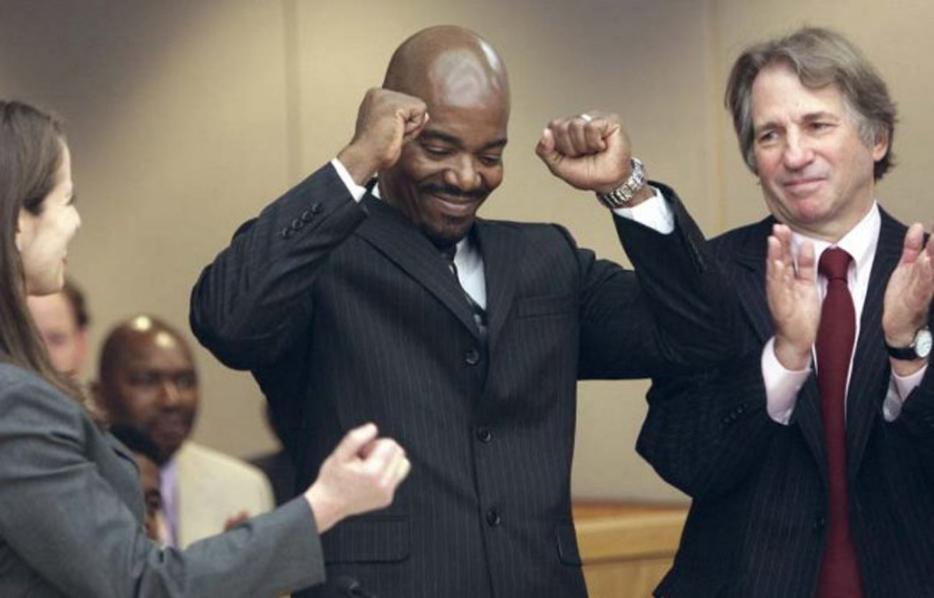When Liz Lemon calls one of her techies on set “Rick,” he responds, “No, I’m Frank—Rick is the other black guy.” An embarrassed Liz turns to her visitor—an investigator from the agency where she has applied to adopt a child—and says, “Happens to everyone, right?” To which the woman responds, “Yes, it happens all the time to my black husband.”
While in ordinary circumstances misidentifying someone from another race just makes you look like a jerk, in criminal justice this tendency, called the Cross-Race Effect or CRE, poses a serious problem. In the current Social Issues and Policy Review, John Paul Wilson and Kurt Hugenberg from Miami University and Michael J. Bernstein of Penn State Abington discuss why witnesses are so bad at identifying people of other races, and what changes in policing crime could do to help keep the wrong people from being sent to jail.
The researchers point to the case of Cornelius Dupree to illustrate the profound effect CRE can have on the lives of the innocent. In 1979, Dupree, who is black, was convicted of kidnapping and rape based on eyewitness identification by the victim, who is white. In 2010, he was exonerated based on DNA evidence. “Despite the fact that cross-race crime accounts for a very small percentage of crimes in the United States,” the researchers note, “roughly 36% of the wrongful convictions that have been later overturned due to the introduction of new DNA evidence were originally prosecuted on the basis of cross-race eyewitness misidentifications (Scheck, Neufeld, & Dwyer, 2003). Put simply, cross-race eyewitness identifications are prone to failure with shocking frequency.”
Although scientists don’t completely understand why CRE happens, two main reasons have been proposed: lack of expertise and categorical thinking.
Lack of expertise refers to the fact that even in multicultural societies like Canada or the U.S., de facto segregation means that most people hang out primarily with other people of the same race. Some theorists say that when we process faces of the race we see most often, we are quicker to see a relationship between facial features (here the eyes are farther apart, here the nose is longer) rather than processing one facial feature at a time. Others say that we use “face space” to remember faces; this means that each of us has a idea of a “normal” face, on which we superimpose new faces. The closer the face is to our “normal,” the more mental work we do to differentiate it, but the further it is, the less we notice the subtle things that mark it as individual.
One of the reasons why eyewitnesses make so many false positive cross-race identifications (feeling sure they do recognize the person when in fact they don’t) is because in our memories, “CR [cross-race] faces are clustered near to each other, [so] any particular CR stimulus will activate multiple nearby exemplars.” You feel like you’ve seen the person before because your brain has lumped all the faces at the outer periphery of your “normal” range together.
Categorical thinking refers to our tendency to assign everyone we meet to categories. This isn’t always a bad thing: as the researchers point out, “Categories allow us to make predictions about what kind of behavior to expect from others. Just as categorizing an animal as a dog allows one to confidently predict that it will wag its tail but not purr, categorizing a person as a baby leads one to expect crying behavior and a lack of verbal skills.” It’s good to remember you have to cut babies some slack. Category information can lead to a difference in face recognition even when the faces are from your own race. The researchers cite a previous study in which white university students were presented with a bunch of faces and told that some of those people went to the same university and some went to different ones. The participants showed a greater recognition of faces belonging to the same group as them (same university) than same-race faces of people belonging to a different group (different university). The researchers conclude, “In short, seeing an individual as a fellow in-group member (even when that individual is of a different race) can substantially improve recognition, whereas seeing that individual as an out-group member can substantially reduce recognition.”
The researchers recommended that police be given training on the unreliability of eyewitness testimony in a cross-race situation. The main problem with CRE is that there’s not much you can do to alter how the witness remembers the face after the fact—the CRE happens when the face is first encoded in the mind, so it’s about seeing, not remembering. And while victims and bystanders do testify as eyewitnesses, it is also often the case that the eyewitnesses are police officers. The researchers recommended cross-race individuation training for police, citing an experiment conducted in 2009 for a good training model. In that experiment, white subjects were presented with a mix of black and Hispanic faces. While the black faces were each assigned a specific letter on the keyboard, for the subject to press when the face appeared, Hispanic faces were all assigned the same key. Over the course of the experiment, subjects got better at recognizing and differentiating between the black faces. The researchers predicted that a similar approach, in which police of all races would train to recognize the differences between cross-race faces, could help law enforcement to process faces seen in the real world more effectively.
One of the study’s reassuring conclusions was that being bad at recognizing people of other races doesn’t just straight up mean you’re a racist. “Though it would be plausible to expect that racial prejudice would be a predictor of the CRE, a large body of research has thus far refuted this possibility,” the researchers write. “Though we would agree that sensitivity training can be beneficial to police for various reasons, we find no basis upon which to believe that improving racial attitudes would have any independent influence on CR face recognition ability.” Of course, we should still be asking why, as the researchers note at the beginning of the study, even our big multicultural cities are de facto segregated by race.
--
Photo of Cornelius Dupree, exonerated in 2010 by DNA evidence






